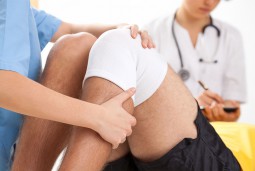Trigger finger is a condition resulting from the development of nodules on the flexor tendons, which extend down the forearm and across the palm of the hand, fingers, and thumb. Trigger finger is characterized by difficulty straightening a finger or thumb, often accompanied by a popping sensation while trying to extend.
The Anatomy of Trigger Finger
Flexor tendons attach to muscles in the forearm and extend to the extremities. When a muscle in the forearm is flexed, the tendons pull on bones in the hand to bend the fingers. In order for this to work appropriate, the tendons must slide freely and smoothly through the tendon sheath, a tunnel-like sheath that keeps the tendon in the correct position. When nodules develop on the tendon over time, the finger can get stuck in a flexed or “trigger” position and popping may be experienced as the nodule passes into or out of the tendon sheath.
Identifying the Cause of Trigger Finger
In most cases, it is difficult to identify a single cause or any cause at all for the development of nodules on the tendon and resulting trigger finger condition. Women are more like to suffer from the condition than men, and those between forty and sixty years of age are more likely to develop the condition. Also at increased risk are those with other long-term disease such as rheumatoid arthritis and diabetes. In some cases, trigger finger is the direct result of strain on the hand after rigorous activity.
Signs and Symptoms
The most common signs and symptoms of trigger finger include:
- inability to straighten the finger
- pain accompanied with straightening the finger
- a feeling as if the finger is popping or catching during extension
- swelling in the hand or finger, underside
- a sore lump in the palm of the hand
- the sensation of dislocation at times
Symptoms are often worst in the morning and subside throughout the day with movement.
Diagnosis
Trigger finger requires very simple diagnosis in a medical office based on medical examination alone. There is no need for x-rays or laboratory testing. The doctor may ask to you perform some simple tasks such as flex and extend the finger.
Non-Surgical Treatment of Trigger Finger
In some mild cases, trigger finger may improve without surgical intervention. If surgery is not recommended, steroid injections may be prescribed to deliver anti-inflammatory medication directly to the nodule in combination with a period of rest and over-the-counter treatment. If symptoms persist after a couple of steroid injections, surgery is often required.
Surgical Treatment of Trigger Finger
When non-surgical treatment is either not recommended or has not been effective, trigger finger is treated surgically in an outpatient setting. During the surgery, the patient is thoroughly numb and does not feel pain. The tendon sheath is cut to provide more room for the tendon to move freely within the sheath. When the sheath heals back together, the passage is wider and symptoms are resolved.
Sometimes physical therapy is required following surgery, but in most cases stiffness resolves within a few weeks of surgery without intervention.



